Enjoy Simplicity with Winter Tree ID
Minimalism. One of its appeals is in stripping away the superfluous and admiring the beauty of simplicity. The same can be said of the garden in winter, especially trees. Enjoy simplicity with winter tree ID.
It’s easier to see the “bones” or the underlying structure of a garden in winter. Without leaves, some trees even look like bones. Sometimes people ask, “What is there to see at Lewis Ginter Botanical Garden in winter?” I’d like introduce you to a few of my favorite trees at the Garden and provide a few tips on how you might identify them.
I have to start by confessing my position at the Garden is in public relations, so any horticulture knowledge I’ve gained is from observing the extraordinary work of my colleagues and taking some of the Garden’s adult education classes. One of those classes was Winter Botany for Botanical Illustration. It was here that I learned more about using a dichotomous key such as this twig key for tree identification. It’s not easy. Even my father, who is a forester, admits winter tree ID can be a challenge.
That’s why the trees I’ve chosen to write about are fairly easy to identify. They are all natives. You may already be familiar with them, but perhaps you’ve never stopped to admire their attributes in winter. No matter how you look at them, the important roles of trees can’t be overstated. They remove pollutants from the air and water, help prevent erosion, and protect wildlife, just to name a few outstanding characteristics.
The winter tree ID tips below are not exhaustive by any means, they are simply meant to be fun for a novice such as me. I hope you’ll have a chance to take a walk around the Garden and see if you notice them.
Liriodendron tulipifera (Tulip Poplar)
The first tree on my list is Liriodendron tulipifera, also known as Tulip Poplar. It stands next to the Lace Gazebo across the service road from Bloemendaal House. 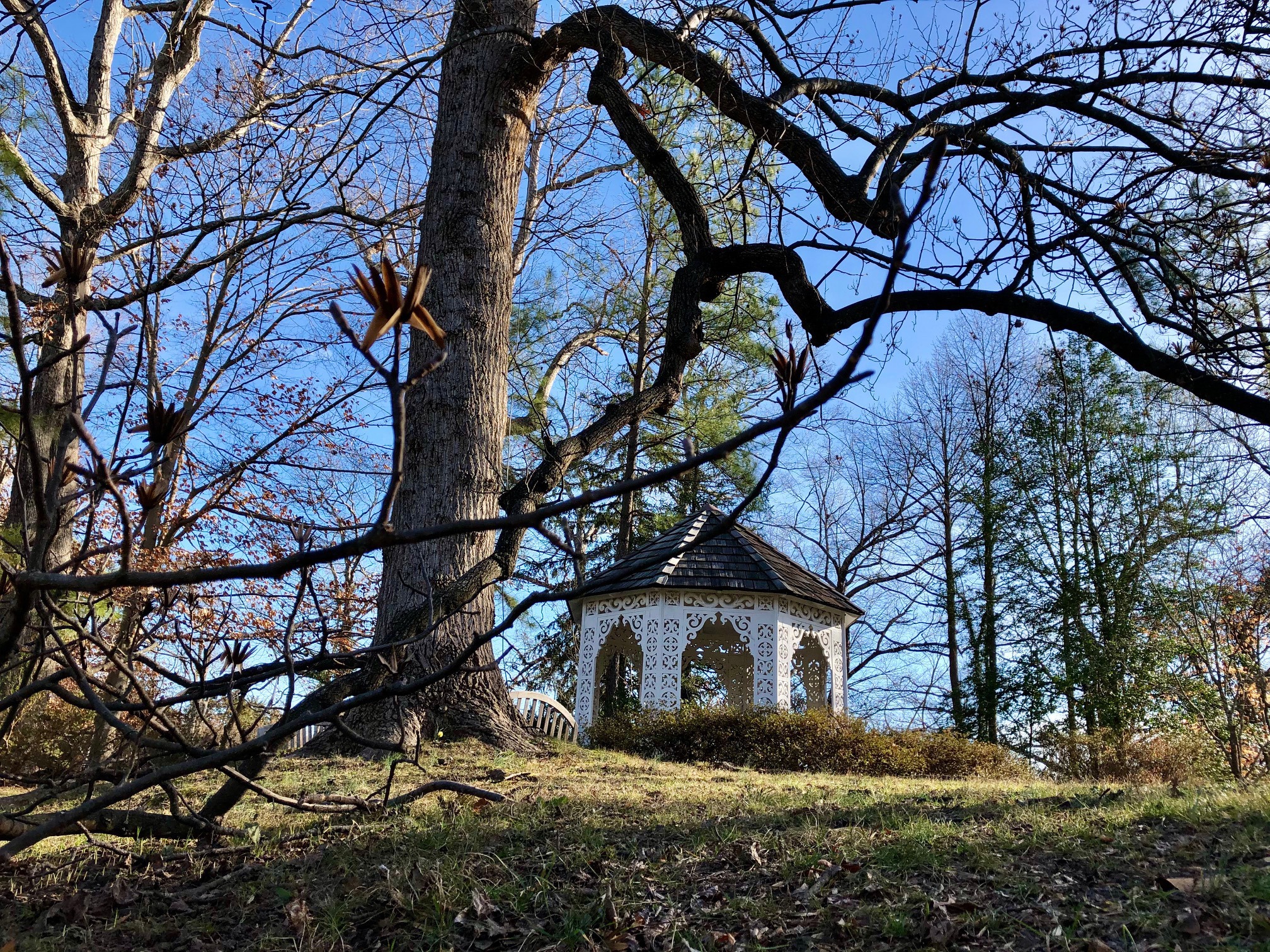 While easy to identify in spring with its tulip-shaped flowers (hence the common name), this tree has an interesting feature to look for in winter: buds that look like duck bills.
While easy to identify in spring with its tulip-shaped flowers (hence the common name), this tree has an interesting feature to look for in winter: buds that look like duck bills. 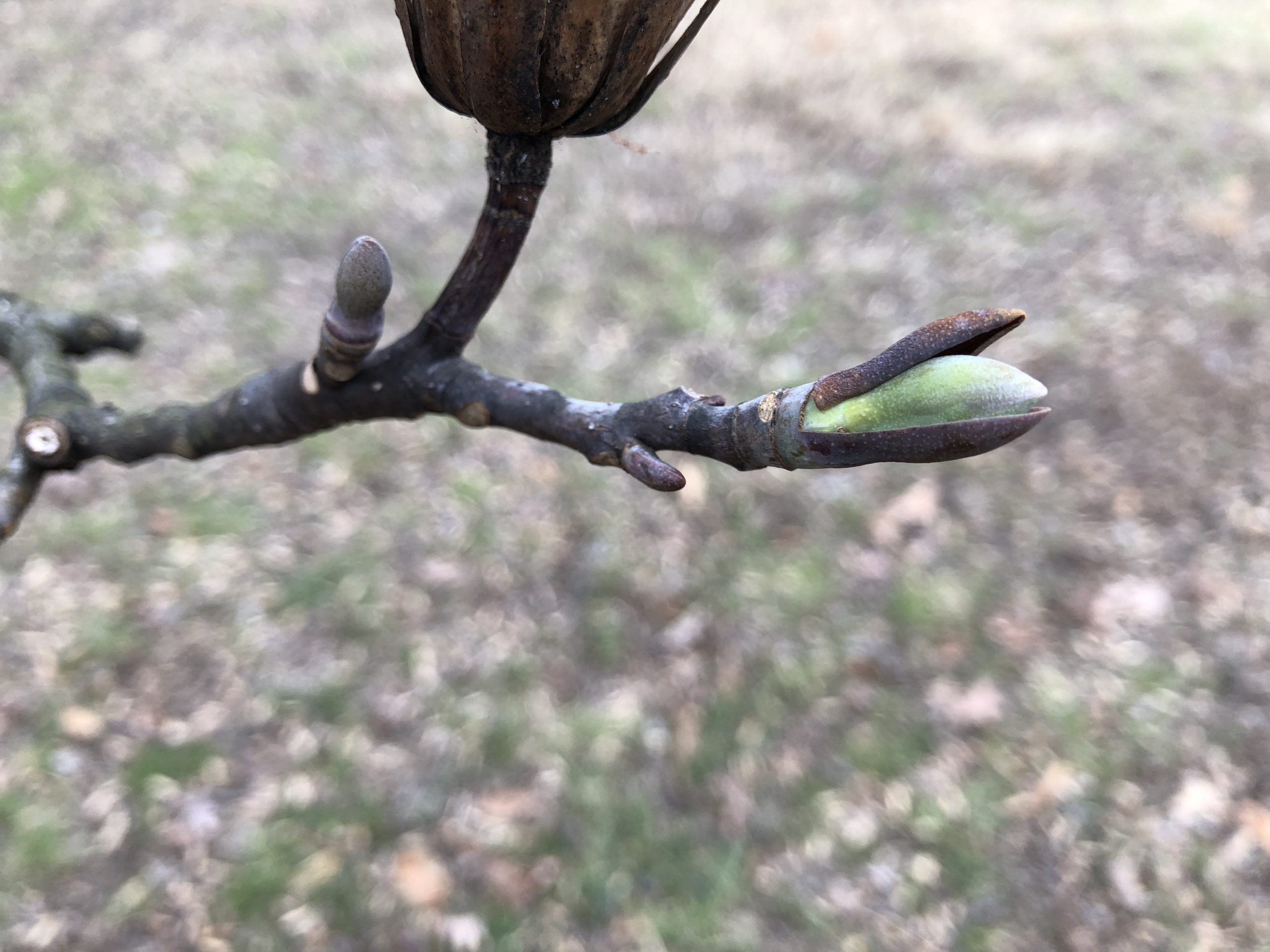
Acer saccharum (Sugar Maple)
Moving into the Grace Arents Garden in front of Bloemendaal House, the second tree is sweet indeed—Acer saccharum or Sugar Maple. 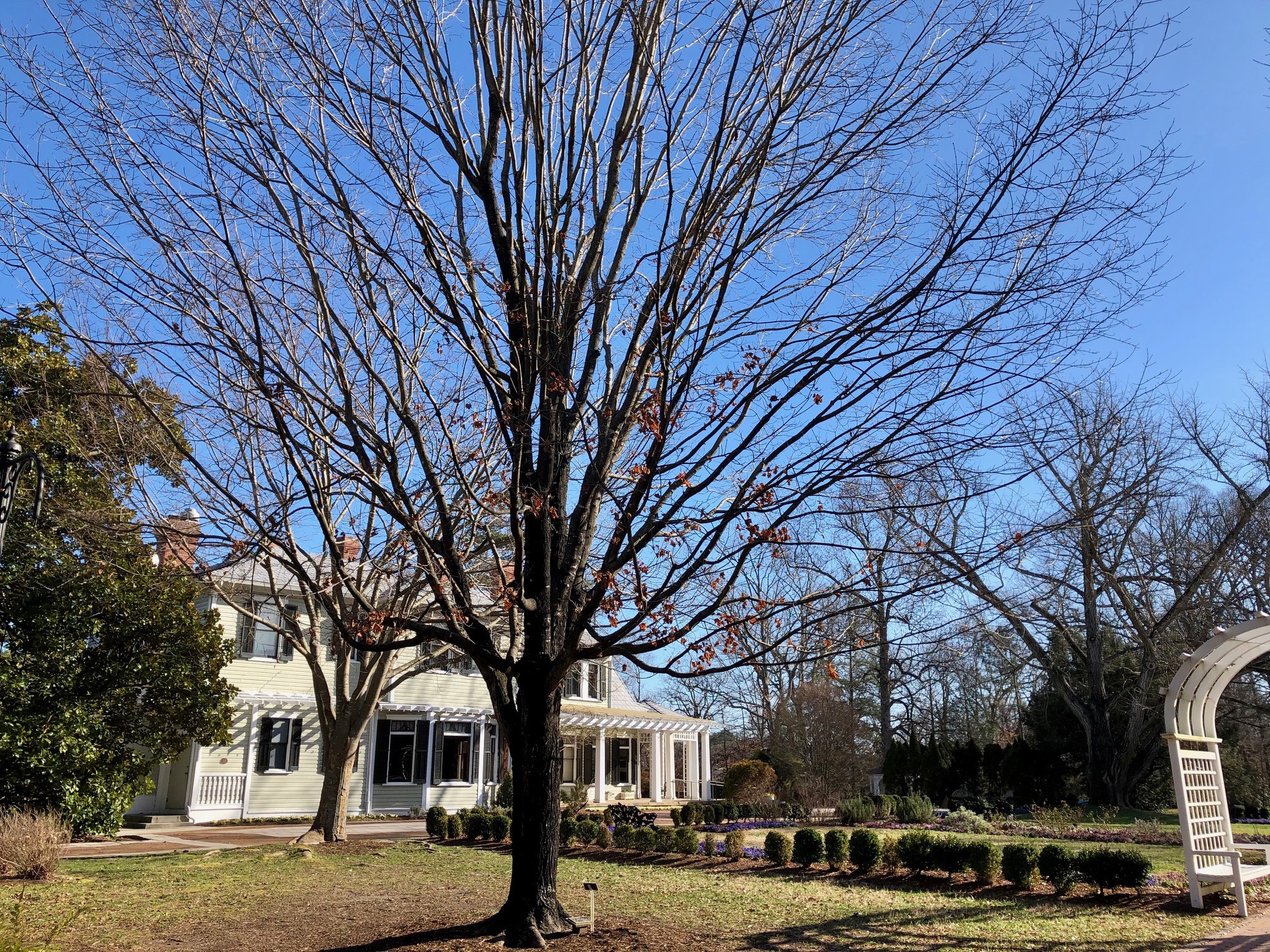 You can find this one near the Rose Arbor closest to the Children’s Garden. In fall, it positively glows in the autumn sunshine, but how can you identify a maple in winter? Maples are one of the few trees with opposite leaf buds. If you look closely at a branch, you can see the opposing leaf pattern. There are several acronyms to help you remember the few trees with this characteristic, including MADCapHorse (Maple, Ash, Dogwood, Caprifoliacae (honeysuckles and viburnums, mostly shrubs) and Horse Chestnut. Another fun tip? The sharp-tipped buds resemble upside down ice cream cones.
You can find this one near the Rose Arbor closest to the Children’s Garden. In fall, it positively glows in the autumn sunshine, but how can you identify a maple in winter? Maples are one of the few trees with opposite leaf buds. If you look closely at a branch, you can see the opposing leaf pattern. There are several acronyms to help you remember the few trees with this characteristic, including MADCapHorse (Maple, Ash, Dogwood, Caprifoliacae (honeysuckles and viburnums, mostly shrubs) and Horse Chestnut. Another fun tip? The sharp-tipped buds resemble upside down ice cream cones.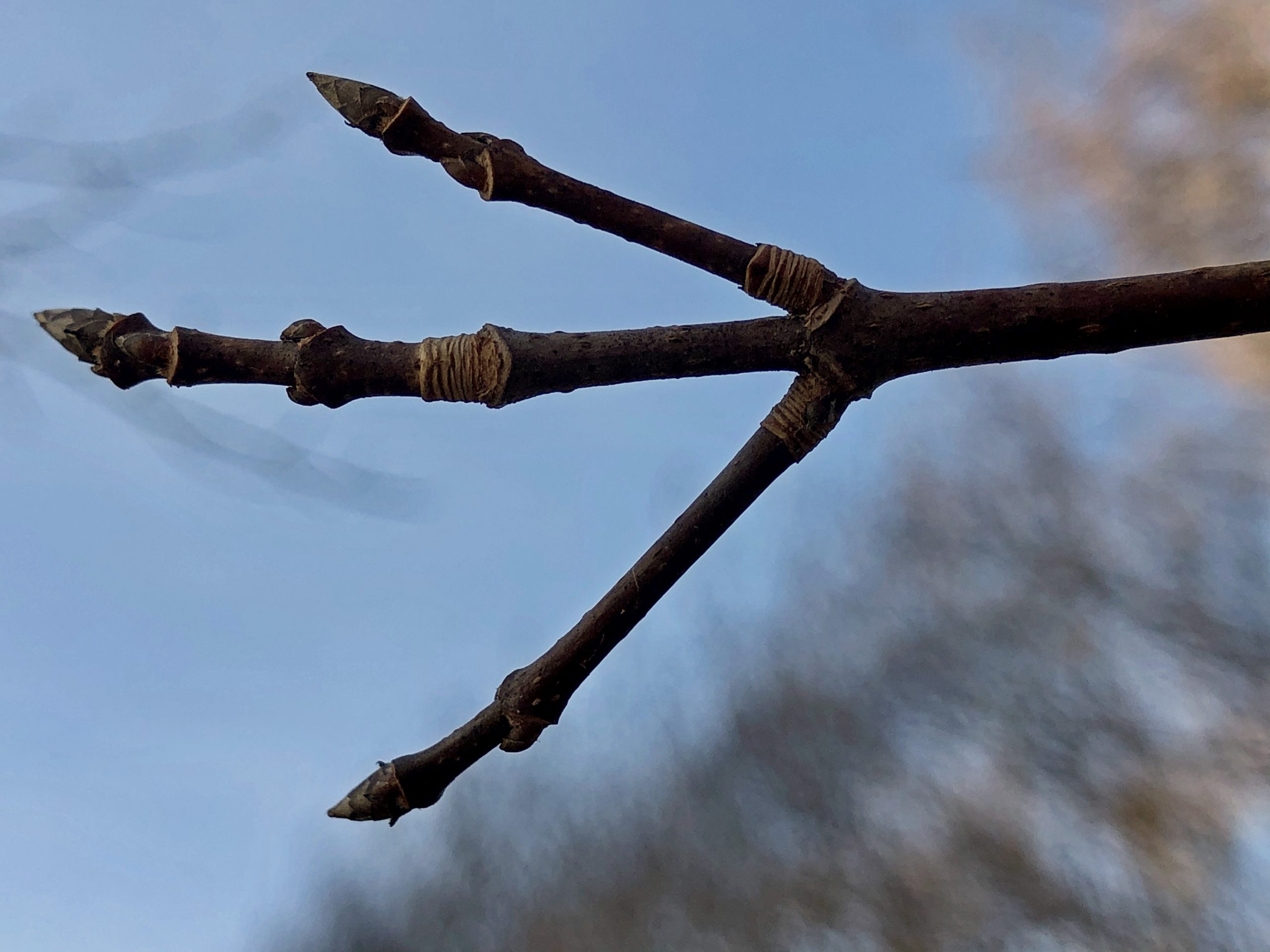
Taxodium distichum (Bald Cypress)
Standing sentinel near the Lotus Bridge is Taxodium distichum or Bald Cypress. 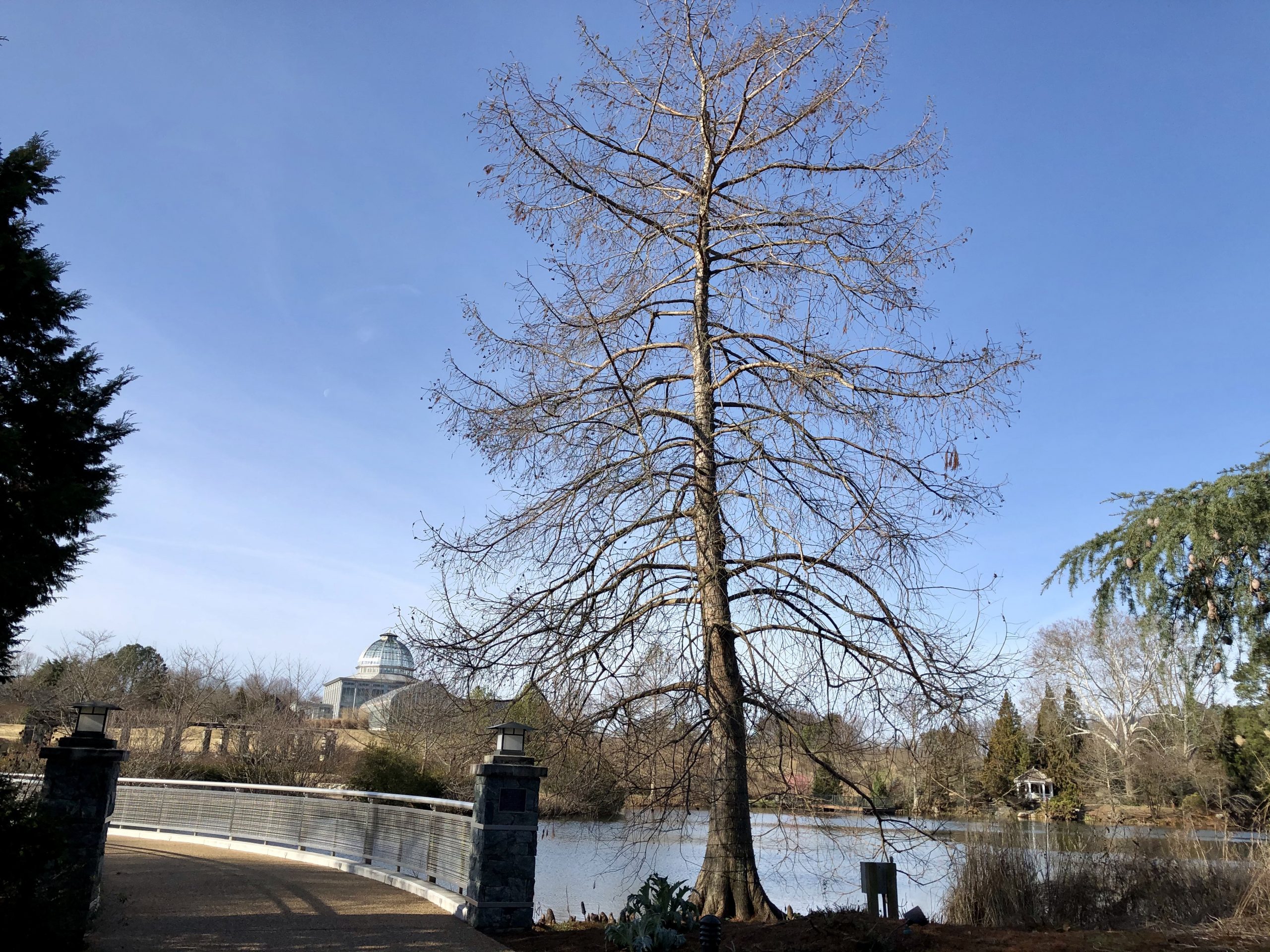 You may notice a few of the lacy, russet needles clinging to the branches. The real give-away, however, is underneath; this tree produces irregular structures known as “knees.” They appear above the roots, rising out of the ground and water. I’ve been walking with guests in the Garden when they’ve spotted the knees, stopped and exclaimed, “What in the world is that?” No one really knows for sure why these trees have knees. Theories include everything from helping to aerate the roots to anchoring the trees in soft soil.
You may notice a few of the lacy, russet needles clinging to the branches. The real give-away, however, is underneath; this tree produces irregular structures known as “knees.” They appear above the roots, rising out of the ground and water. I’ve been walking with guests in the Garden when they’ve spotted the knees, stopped and exclaimed, “What in the world is that?” No one really knows for sure why these trees have knees. Theories include everything from helping to aerate the roots to anchoring the trees in soft soil. 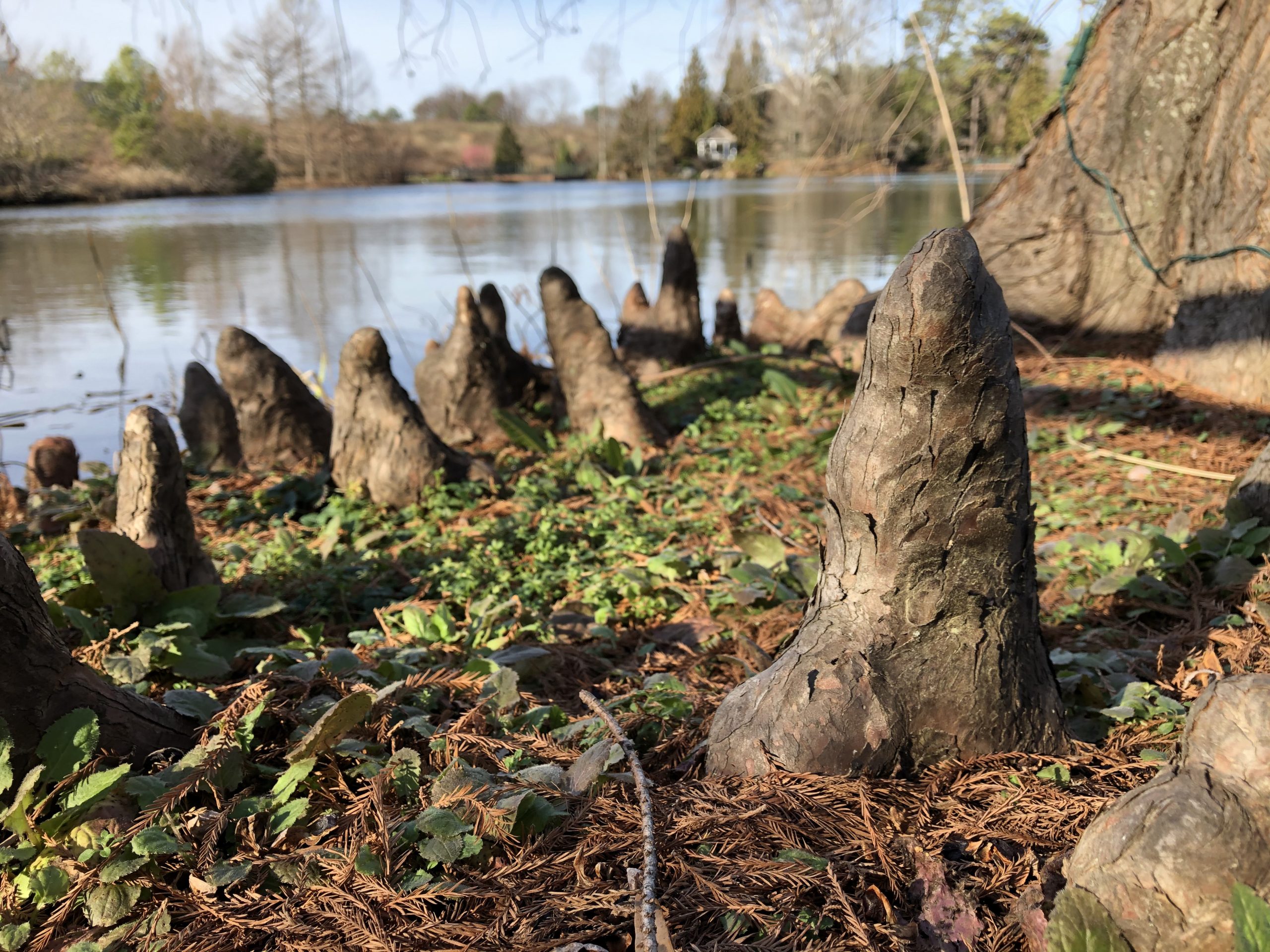
Platanus occidentalis (American Sycamore)
Proceed just a few steps onto the Lotus Bridge and you’ll see the next tree directly across the lake—a large Platanus occidentalis or American Sycamore. 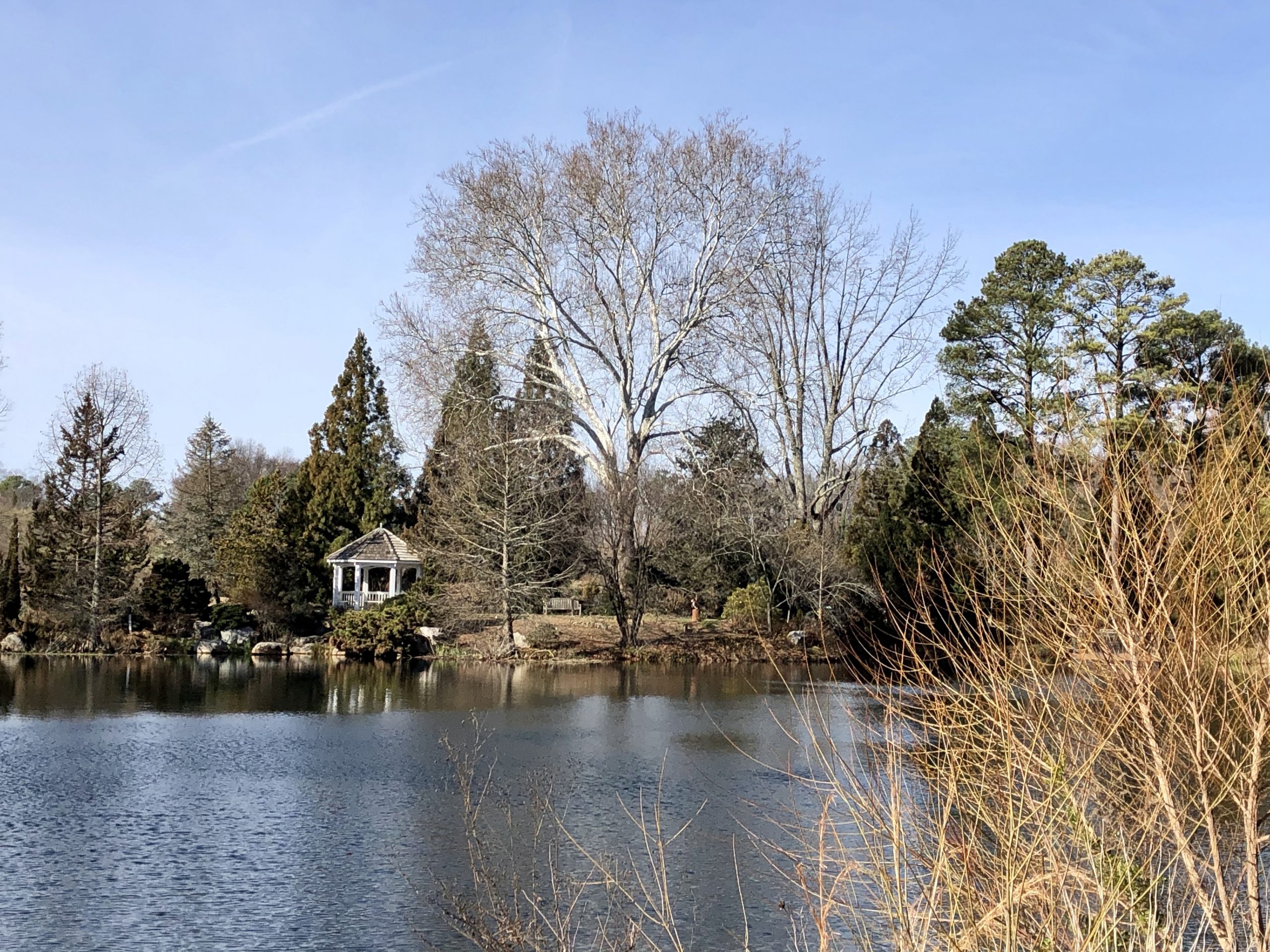 It’s located near the gazebo in the Streb Conifer Garden and easily identified by its mottled white, green and brown bark. Look closely and you may also see a few large round fruits hanging on long stalks; these typically hang on through winter and break up in early spring. This is one of my favorite trees in winter because I love the contrast of the white smooth bark against the deep blue sky.
It’s located near the gazebo in the Streb Conifer Garden and easily identified by its mottled white, green and brown bark. Look closely and you may also see a few large round fruits hanging on long stalks; these typically hang on through winter and break up in early spring. This is one of my favorite trees in winter because I love the contrast of the white smooth bark against the deep blue sky.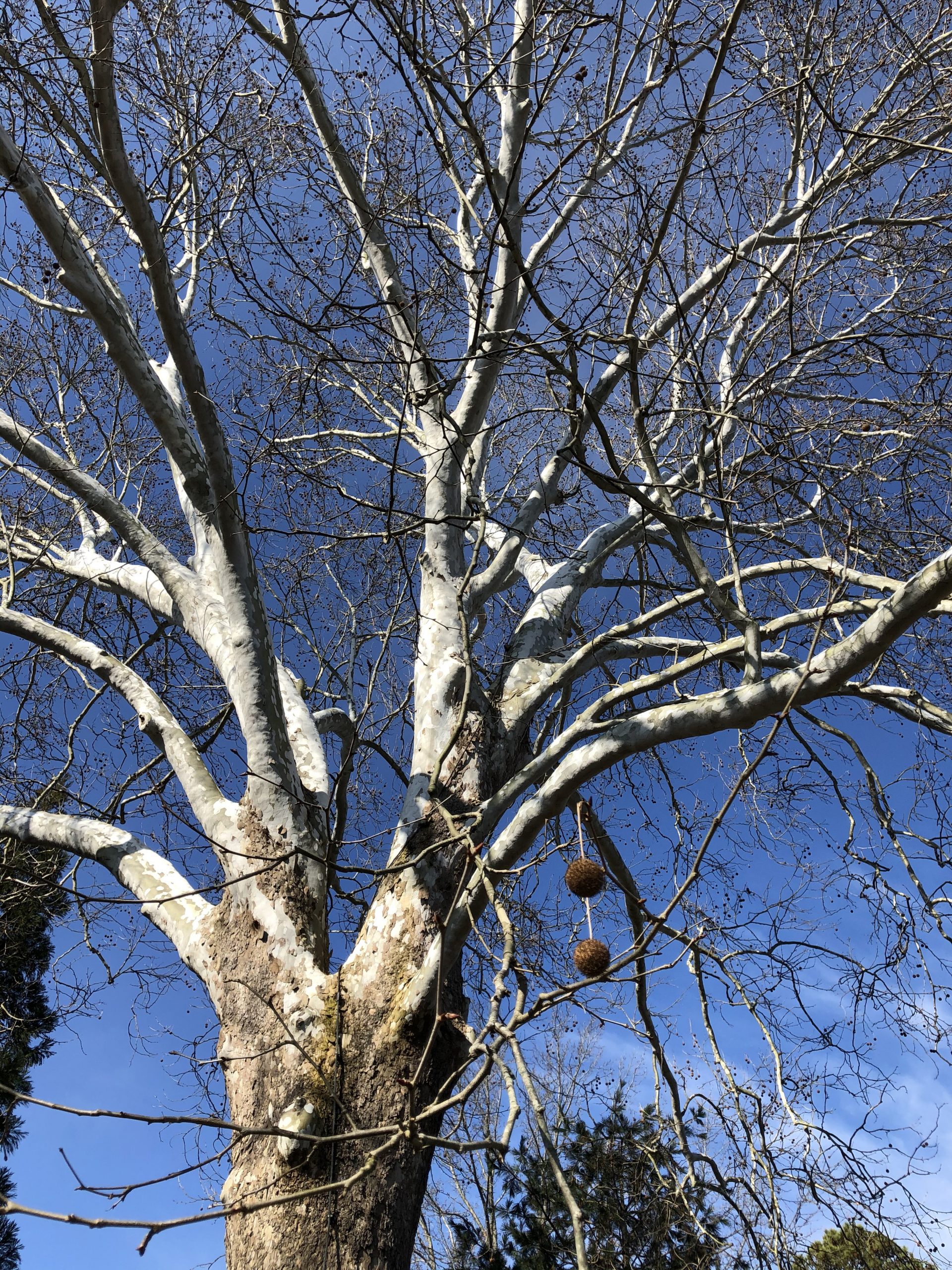
Morus rubra (Red Mulberry)
Walking around Sydnor Lake we come to the last tree on my list. How could I not include the 100-year-old Morus rubra or Red Mulberry in the Children’s Garden?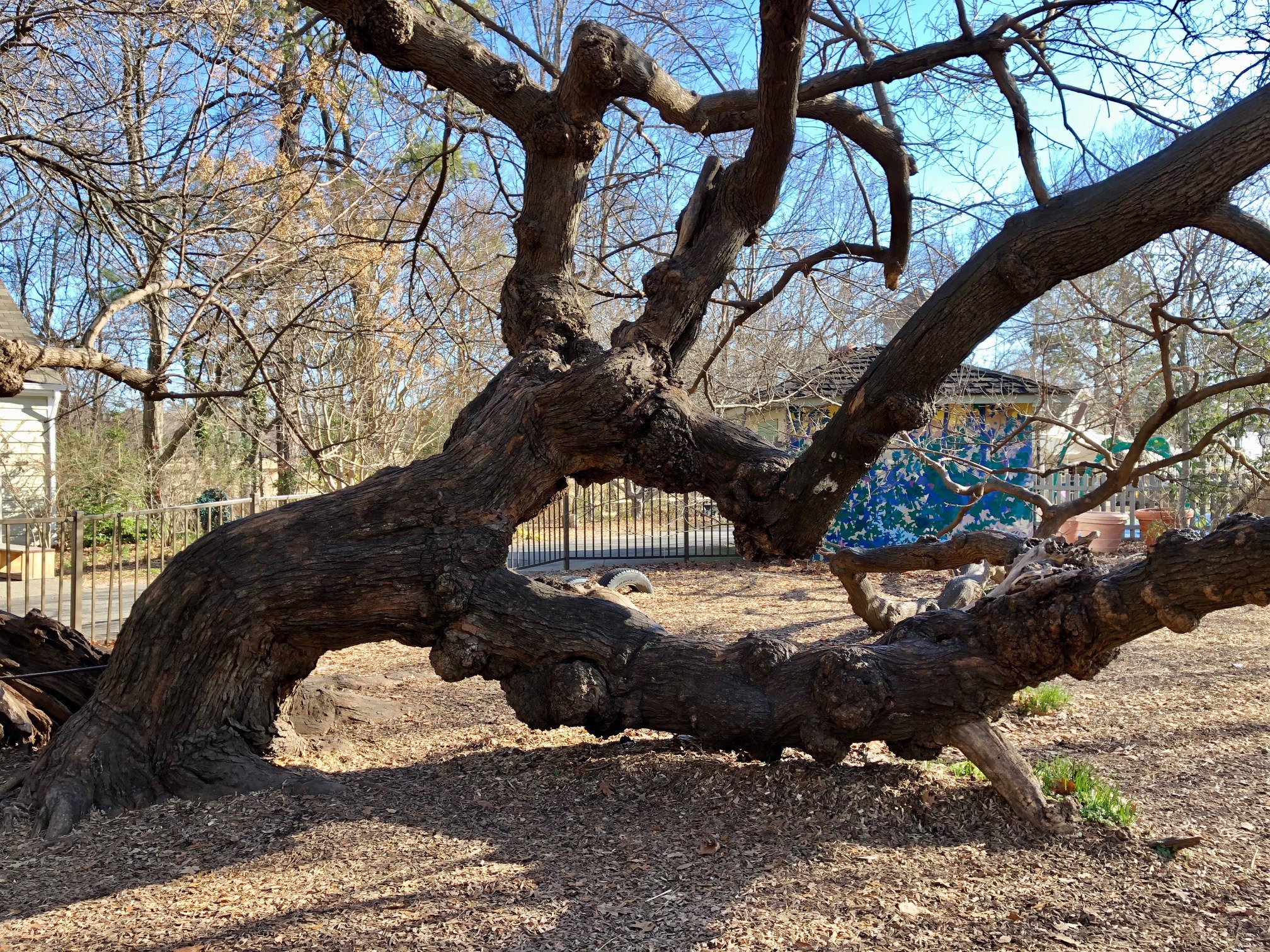 It may be one of the most-loved trees in Richmond. Thousands of children, including my own, have climbed its gnarled branches. I think this tree, more than any other, embodies what Lewis Ginter Botanical Garden is all about—cultivating an intimate, life-long relationship with Nature.
It may be one of the most-loved trees in Richmond. Thousands of children, including my own, have climbed its gnarled branches. I think this tree, more than any other, embodies what Lewis Ginter Botanical Garden is all about—cultivating an intimate, life-long relationship with Nature.
I hope you’ll come visit our Garden trees soon. Share them on social media and tag us so we’ll see your favorites!